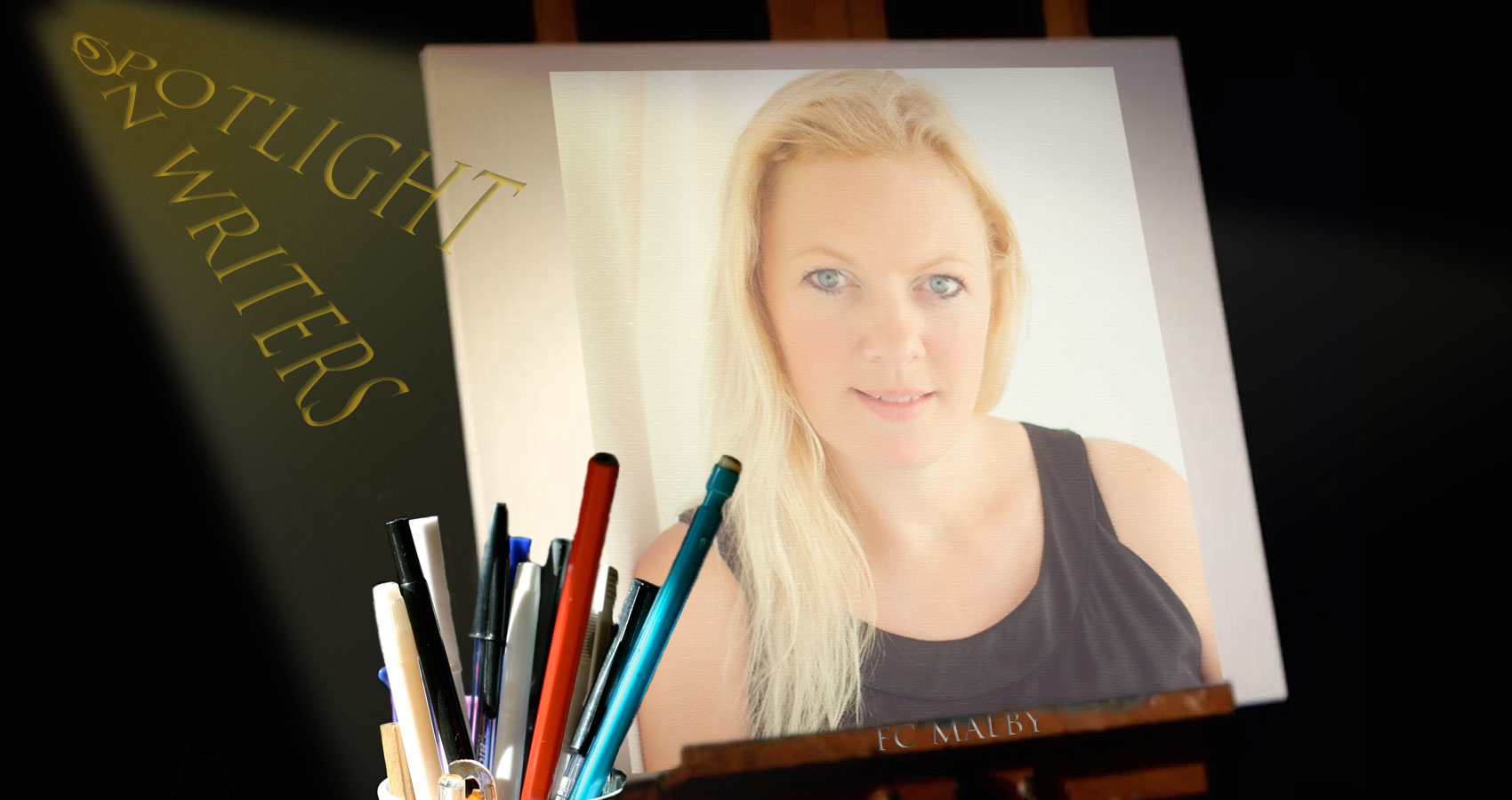Spotlight On Writers
FC Malby
@fcmalby
- Where, do you hail from?
- What is the greatest thing about the place you call home?
Living by the coast. I love the sea – the sound of the waves, the scent of the salt air, feeling the wind against your skin, walking barefoot along the beach, collecting shells and sea glass. There’s nothing like it. It’s where I feel freest. I also really enjoy water sports, particularly windsurfing and waterskiing. You can live close to rivers and lakes, but it’s not the same. I love Scotland for the same reason, particularly the Hebridean islands on the west coast. There’s something about the wildness of coastlines that draws me.
- What turns you on creatively?
I’ve always been inspired by poetry and, more recently, short stories. There is something about these forms that spark so many ideas in my mind. I read a lot of both, and have long been an admirer of poets like Yeats, Keats, Auden and Dickinson. In terms of short stories, my go to authors are William Trevor, Alice Munro, Chekov, Kafka, and Hemingway. My current favourite is a collection by the brilliant Hilary Mantel, The Assassination of Margaret Thatcher. She never wastes a single word. Her writing is tight, thought provoking, at times, shocking, and illustrates everything a new writer needs to learn about the craft. Reading her work can teach you more about writing techniques than any learn-how-to-write handbook ever will. I also read a lot of short stories by Alison Moore and flash fictions by David Gaffney.
- What is your favorite word, and can you use it in a poetic sentence?
My favourite word is a German word: Morgenmuffel. It describes someone who struggles to wake up in the mornings and usually avoids early morning conversations. Although I’m not grumpy, as the word implies, I’m not a morning person, at least not until I’ve had a strong coffee, or two. I’ve always been a night owl and find that I wake up as the day goes on. I used to write essays at university in the small hours and I now often write in the evenings, as my days are pretty full. I enjoy that quiet space at the end of a busy day to think and put words to paper, or screen.
- What is your pet peeve?
I don’t really have any pet peeves. It takes quite a lot to wind me up. I’m a pretty relaxed and even-tempered person. In terms of writing, though, am a stickler for grammar and punctuation. I’m surprised by how much printed material and journalism includes obvious mistakes. I should probably start proofreading, as I always pick it up.
- What defines FC Malby?
My writing is a mixture of literary/historical fiction and psychological thrillers, but I’m also a short story and flash fiction author, as well as a poet. I use imagery and try to create suspense and a sense of anticipation in my work as much as possible. I try to avoid putting people or writing into boxes. Some of the endorsements of my writing might help to sum up my work: “Deeply moving and attuned to the subtleties of human relationships.” Dan Coxon. “Malby’s writing is restrained, understated and elegant.” Maureen Scott.
- We Want Our Bodies Back - January 20, 2023
- Spotlight On Writers – FC Malby - March 5, 2022
- Oh, How You Will Fly - February 1, 2022



